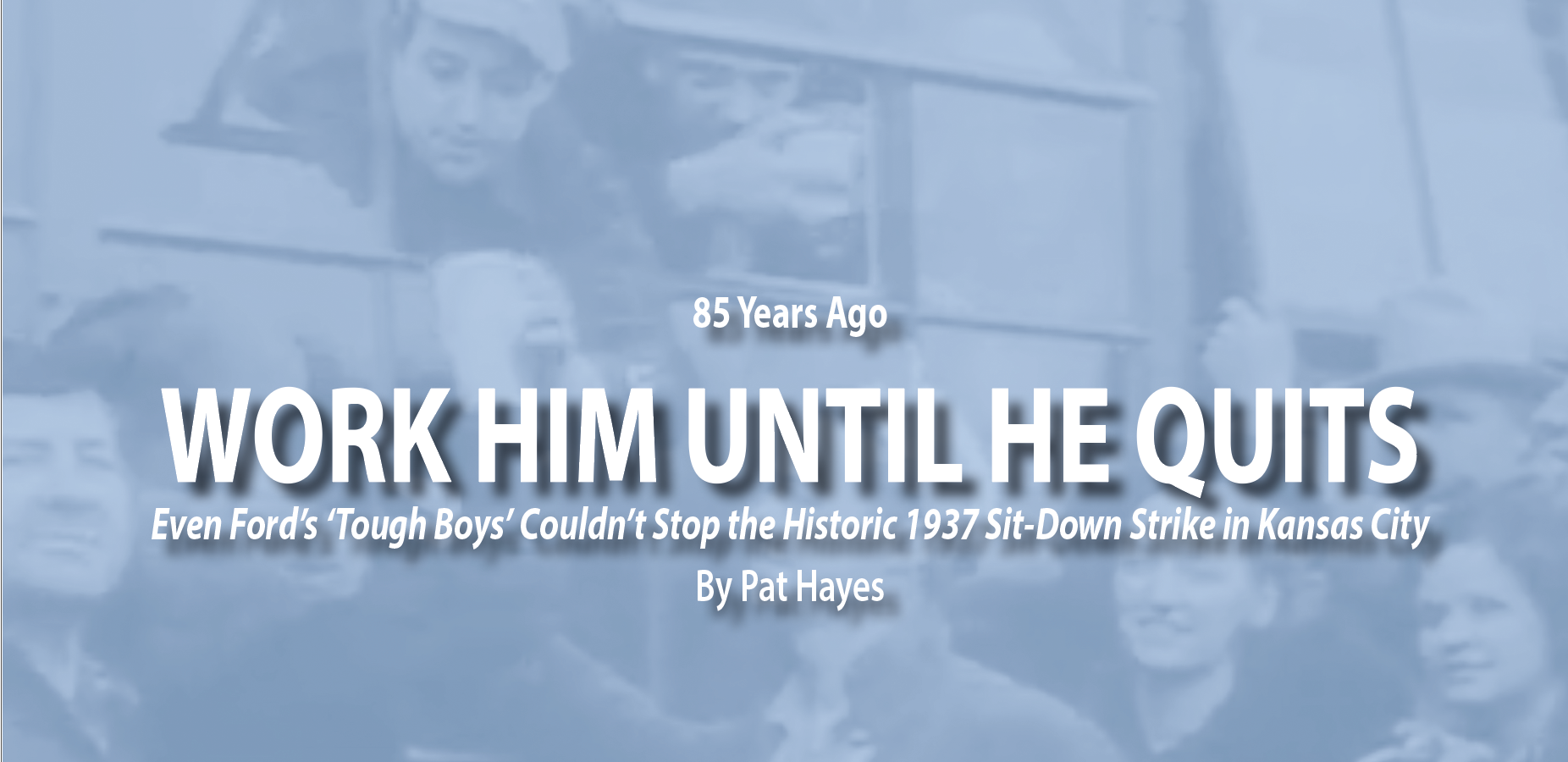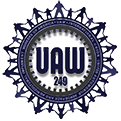
Work him until he quits
By Pat Hayes
Eighty-five years ago, in February 1937,Walter Williams, a leader of the fledgling UAW organizing drive at the Ford Kansas City Assembly Plant was pulled off his job on the No. 1 metal line in the body construction department and escorted to the office of plant superintendent Joseph Bush. Ominously, he found a number of other supervisors waiting for him when he got there.
“Keep your damn mouth shut,” about the union, Bush snapped at him, because, “there are plenty of tough boys here that will crack your skull for you.”
Williams had every reason to take the threat seriously. Henry Ford was adamantly opposed to unions. He’d hired Harry Bennett, an ex-Navy boxer, to run his internal security force, the Ford Service Department. Bennett filled the Service Department with 3,000 armed men, many of them street toughs and goons with criminal records.
“He ran the Rouge Plant like a Central European police state,” according to the Detroit News. “Anti-union groups were encouraged, workers were urged to spy on each other and feared losing their jobs if they participated in any union discussions.” And, as Walter Williams knew all too well, the long arm of Harry Bennett’s goon squad and spy system reached all the way from Dearborn to Kansas City.
Even so, Williams didn’t take the hint. Despite the very real danger of taking a beating or losing his job, there was growing optimism among the small core of UAW organizers that the time had finally come to win union recognition at Ford and change things for the better.
As Williams walked back to his job on the metal line, the nation was entering the eighth year of the Great Depression following the stock market collapse of Oct. 29, 1929 that came to be called Black Tuesday. Although many were still out of work, unemployment wasn’t as bad as it had been in 1933 when nearly one in four couldn’t find a job. And, in the first months of the year, a short-lived sense of optimism was stirring in the country as production, profits, and wages briefly returned to their pre-1929 levels.
There were other reasons for American workers to be hopeful, as well. Roosevelt’s New Deal policies of providing relief to the unemployed, reform of the banking system and increased government spending to aid recovery of the battered economy were working. Broad support for Roosevelt’s New Deal won him a second term in a landslide 1936 victory over Alf Landon. In that election, Roosevelt won 60.8 percent of the popular vote – the biggest margin of victory in a presidential election since 1820 – and 523 electoral votes. FDR lost only Maine and Vermont.
Barely a month after the UAW was founded at a conference in Detroit in 1935, Roosevelt signed the National Labor Relations Act into law. The newly enacted labor law prohibited employers from interfering with, restraining or coercing employees who were exercising their right to freedom of association to form, join, or assist labor organizations. For the first time, the law granted workers the right to bargain collectively for wages and working conditions through representatives of their own choosing, and to engage in other protected concerted activities with or without a union.
The UAW organizing drive at the Ford Motor Kansas City Assembly Plant started in January 1937 on the heels of a wave of sit down strikes at auto plants across the country. On Nov. 16, 1936 workers at Fisher Body in Atlanta sat down on the job. Just one month later on Dec. 16, G.M. workers in Kansas City launched a sit-down strike and on Dec. 28, workers at Fisher Stamping in Cleveland joined the wave of sit-down strikes.
Then on Dec. 30, after months of careful planning by UAW leaders in Detroit, the historic Flint sit-down strike got under way. Using the slogan, “sit down and watch your pay go up,” workers occupied Fisher No. 1 in Flint. On Feb. 11, 1937, about the time Bush was telling Williams to keep his damn mouth shut, General Motors reached an agreement recognizing UAW as exclusive bargaining representative for its workers.
Fearing retaliation Williams and other union organizers met in secret in restaurants and member’s homes to plot strategy. They soon learned their plans were leaking out. In order “to test out” the men he suspected of espionage Williams told workers on the metal line that the UAW would hold a meeting that evening and invited them to attend, according to testimony given to the National Labor Relations Board.
The following day, according to testimony from John Rickenbaugh, an assistant foreman in charge of the metal line, a high ranking foreman in the body construction dept., John Wessel, ordered him to fire Williams.
When Rickenbaugh responded that firing Williams might provoke a strike, Wessel told him to hold off. Later that day, he told Rickenbaugh he was moving Williams to another job in the roof panel section where he would “work him to where he would have to quit.”
James Goff, an assistant foreman in the roof panel section, testified that when Eugene F. Eaton, the general foreman in the body construction dept., brought Williams to the new job he “instructed me to work his tail off and keep him busy and not let him talk to anyone while he was working.”
Eaton was serious. A few days later, according to the NLRB, he warned Goff that, “if you can’t keep Walter Williams busy and keep him from working for the union, I will run you out of here.”
The illegal strong arm effort by Ford bosses to defeat the UAW organizing drive in Kansas City was unsuccessful. The wave successful of labor actions culminating in the Flint sit-down strike triggered an explosive growth in UAW membership at the Kansas City Assembly Plant during the months of March, April and May. On April 2, company violations of the National Labor Relations act would trigger a sit-down strike among Local 249 members at the Ford Motor Kansas City Assembly Plant.
